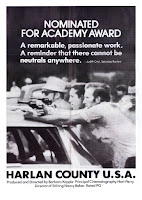Michael Jackson: Blood on the Dance Floor
 Last night, in a state of ecstasy, anger, and hurt, played MJ as loud as the stereo could tolerate. He was magnificent in his peculiar, excessive way -- an exemplary artist as Henry Miller describes in Tropic of Cancer, page 256, beginning with "do anything but let it produce joy....Things, certain things about my idols bring tears to my eyes: the interruptions, the disorder, the violence, above all, the hatred they aroused. When I think of their deformities, of the monstrous styles they chose, of the flatulence and tediousness of their works, of all the chaos and confusion they wallowed in, of the obstacles they heaped up about them, I feel an exaltation. They were all mired in their own dung. All men who over-elaborated. ... What is called their over-elaboration is ... the sign of struggle, it is struggle itself with all the fibers clinging to it, the very aura and ambiance of the discordant spirit.... I run with joy to the great and imperfect ones, their confusion nourishes me, their stuttering is like divine music....."
Last night, in a state of ecstasy, anger, and hurt, played MJ as loud as the stereo could tolerate. He was magnificent in his peculiar, excessive way -- an exemplary artist as Henry Miller describes in Tropic of Cancer, page 256, beginning with "do anything but let it produce joy....Things, certain things about my idols bring tears to my eyes: the interruptions, the disorder, the violence, above all, the hatred they aroused. When I think of their deformities, of the monstrous styles they chose, of the flatulence and tediousness of their works, of all the chaos and confusion they wallowed in, of the obstacles they heaped up about them, I feel an exaltation. They were all mired in their own dung. All men who over-elaborated. ... What is called their over-elaboration is ... the sign of struggle, it is struggle itself with all the fibers clinging to it, the very aura and ambiance of the discordant spirit.... I run with joy to the great and imperfect ones, their confusion nourishes me, their stuttering is like divine music....."




